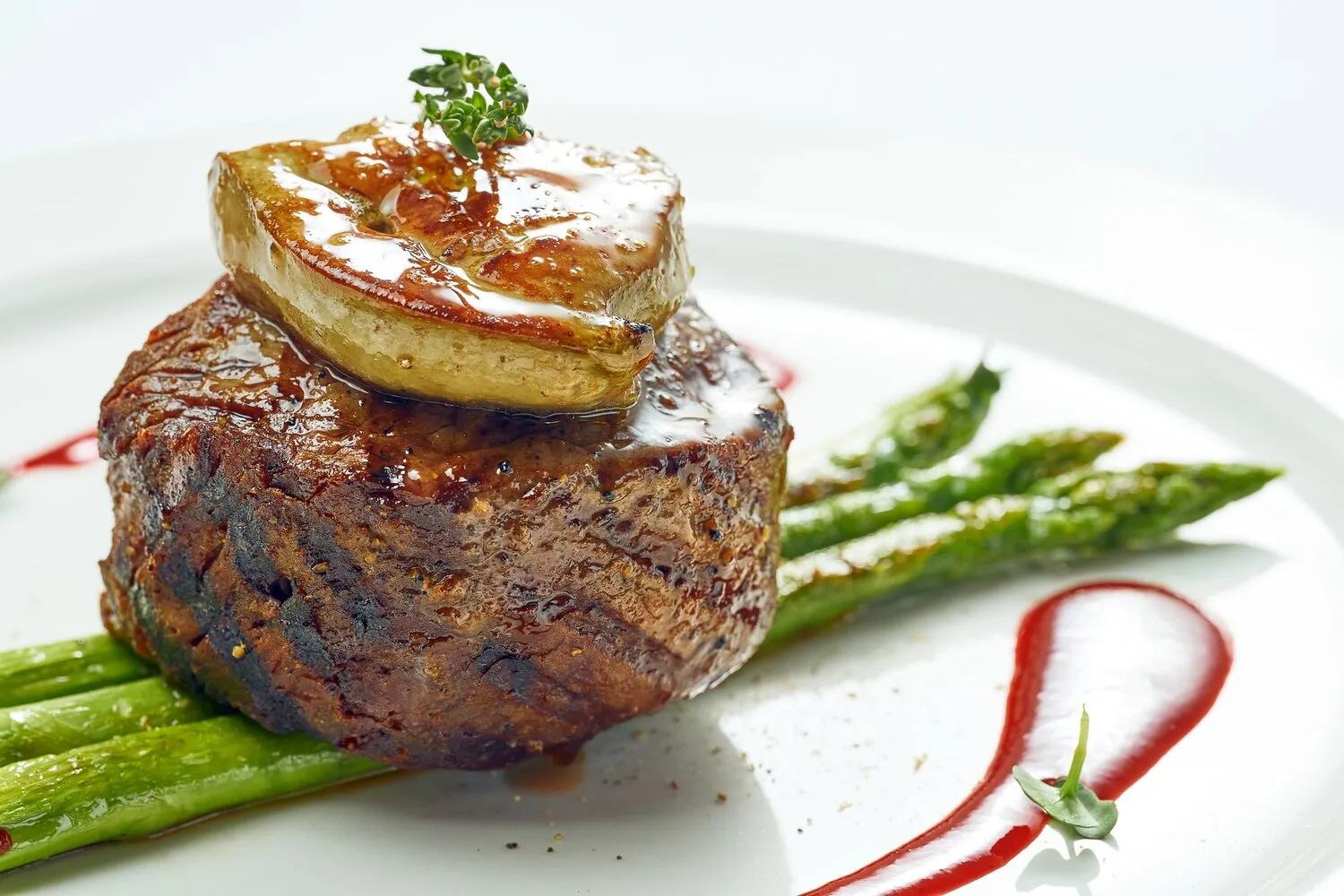
Cowboy Ribeye
A bone-in ribeye steak, known for its rich marbling and flavor.
Nutrition Facts
* The % Daily Value (DV) tells you how much a nutrient in a serving of food contributes to a daily diet. 2,000 calories a day is used for general nutrition advice.
Triple J Chophouse
The Cowboy Ribeye, as a specific cut and name, is relatively modern. However, its roots lie in the American West's cattle ranching history, where beef was a primary food source. The ribeye cut itself has been around for much longer, simply being a delicious and flavorful section of the steer.
The Cowboy Ribeye is often associated with celebrations, special occasions, and the quintessential American barbecue. It embodies a sense of indulgence and appreciation for quality beef.
Celebratory Meal
A Cowboy Ribeye is frequently served at gatherings, family dinners, and holidays, representing a treat and a symbol of abundance.
American Barbecue Culture
It is a staple at barbecues, showcasing the American love for grilling and outdoor cooking. It's often paired with classic barbecue sides like coleslaw, baked beans, and potato salad.
Steakhouse Staple
The Cowboy Ribeye is a prominent feature on steakhouse menus across the United States, signifying a high-quality and premium dining experience.
The Cowboy Ribeye boasts a rich, beefy flavor profile, enhanced by the bone-in cut and ample marbling. Savory and robust, it offers a satisfying taste of classic American cuisine.
The primary flavor is intensely beefy, derived from the high fat content and marbling within the ribeye muscle. The bone contributes a deeper, more nuanced flavor during cooking. Seasonings such as salt, pepper, garlic, and herbs like rosemary or thyme complement the natural richness of the beef. Grilling or searing creates a flavorful crust that adds another layer of complexity.
Reverse Sear
Consider using the reverse sear method: cooking the steak at a low temperature until almost done, then searing it at high heat for a perfect crust.
Proper Seasoning
Season generously with salt and pepper at least 30 minutes before cooking. This allows the salt to penetrate the meat and enhance its flavor.
Resting Period
Allow the steak to rest for at least 10 minutes after cooking. This allows the juices to redistribute, resulting in a more tender and flavorful steak.
Internal Temperature
Use a meat thermometer to ensure the steak reaches your desired doneness. Medium-rare is typically around 130-135°F, medium is 135-145°F.
Explore additional Steakhouse dishes and restaurants
Explore SteakhouseDiscover top dining spots and culinary experiences in Lubbock.
Explore LubbockLearn more about the food culture, restaurant scene, and culinary heritage of United States.
Explore United States